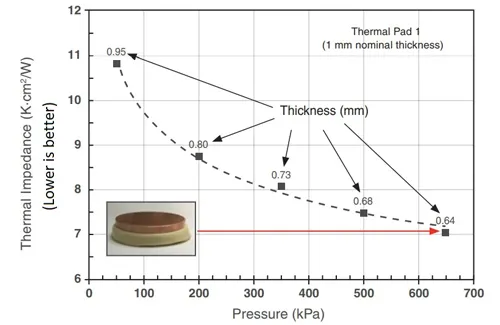Thermal Gap Pads Need Compression to Get Their Rated Thermal Conductivity Rating?
- Posted on:2023-05-22 14:31:00
- Source:AOK Thermal Pad Manufacturer FAQs
Thermal gap pads are designed to fill the gaps between two surfaces. The thermal gap pads are not perfectly uniform, they may have voids and gaps in-between them hence why compressing them makes them more uniform. And require compression to achieve their rated thermal conductivity. The compression helps to remove any air pockets that may exist between the surfaces, allowing for better heat transfer.
Thermal conductivity is only one mechanical property to take a look at when buying replacement thermal gap pads. Thickness, the compression it was tested at and the hardness will also play a factor in your performance. Every electronic applications will be built differently with different gap sizes. Determining the best thermal gap pads solution will require a little bit of thinking.
As you can see, the more the pads was compressed, the higher the thermal conductivity (or lower the thermal impedance) became. Thermal impedance is the inverse of thermal conductivity, so in the test, thermal impedance lower is better.
We recommend a 5~25% compression of thermal pads. Even though some thermal pads can be compressed up to 70%, too much compression can break solder joints, damage PCB modules, etc. So going too thick, applying too much compression is dangerous.
Thermal conductivity is only one mechanical property to take a look at when buying replacement thermal pads. Thickness, the compression it was tested at and the hardness will also play a factor in your performance. Every electronic applications will be built differently with different gap sizes. Determining the best thermal pad solution will require a little bit of thinking.
If you would like to learn more about AOK performance thermal materials, please visit our website at www.aok-technologies.com.


